What is surprising to me is that why any Indian or any school history student has not heard of this Newton Stone before? So why no one has mentioned this uncanny resemblance of Hindu's and Indian influence all over the globe? It is well documented that the ancient Egyptians and Indians were very akin. Why there river is called Nile, which the Sanskrit word for Blue? It is recorded by Britishers that when they wanted to navigate Nile to its source, only Hindu Brahmins knew about its exact location. (source Anacalypsis). Many of religious beliefs of Egyptians were similar to Hindoos. Like Phallic/Lingam/Obleisk, Snake and Solar worship. Isis and Horus are nothing but corruption of Ishish and Suresh as mentioned in the postings Isis-Jesus-Isha-Isha-masi and On Horus, Chorus, Korus and Suresh.
Why Ramyses's (read Rama-ishish) family married Hittites daughters, who were worshipping Vedic Gods, had Hindu names and Sanskrit like religion. Modern academicians have only lately come to accept this resemblance as put it as as a PIE (Proto Indo European) Civilization, PIE Language, and PIE Religion. Please see following links, Ramesses_II, Hittites, and Indo-Aryan_superstrate_in_Mitanni. Why does Cleopatra sends her son to India when she is defeated along with Mark Anthony by Octavius? See what Pharos have their on their Heads and what Shiva has on its head. See how many Gods they have with animal heads and how many Gods Hindus have with animal heads.
Take the characters from the script and compare with the Brahmi Related Scripts. Any layman would realize that the script is in the same family as of Brahmi and Phoenician. Please see my other postings Common Brahmi And Phoenician Script and Phoenicians And Panis .
What makes it hard is that without knowing which exact language it belongs to, as there are many dialects using the variants of the same script, like it is today with Devanagri, and the fact that the same letters have many variations, and then these letters get modified with "maatras" or vowel measures, which only extends the letters in top and bottom, right and left wise, only making it difficult to read and parse. My children have been reading Hindi and Sanskrit for last 10 years now, but this time I got a different font from the WikiSource and they had a hard time reading the text.
So I have refrained myself in translating the text myself though I was tempted and tried for a short while. I went crazy trying to parse, and also not knowing to read from left to right, bottom to top, or to invert the picture and read it. See my posting Hammu Rabi which has an example of this problem leading to mistakes. But I have included a translation of the transcript and presence of Budhhist characters and Hindo Swastika symbols in coins found in the Nordic and Denmark regions.
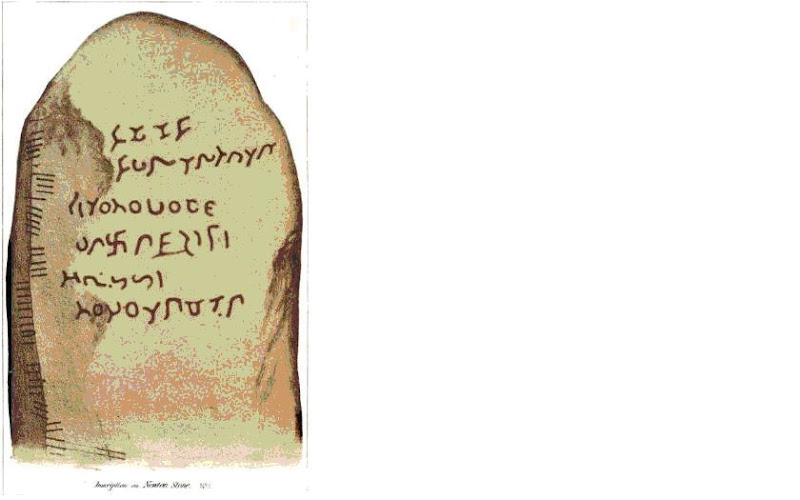
Newton Stone.
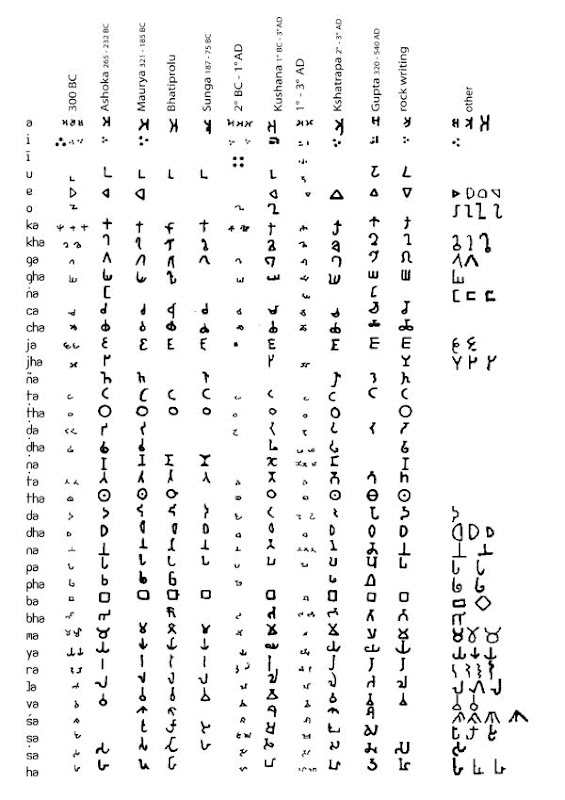
Different variations of Brahmi Scripts
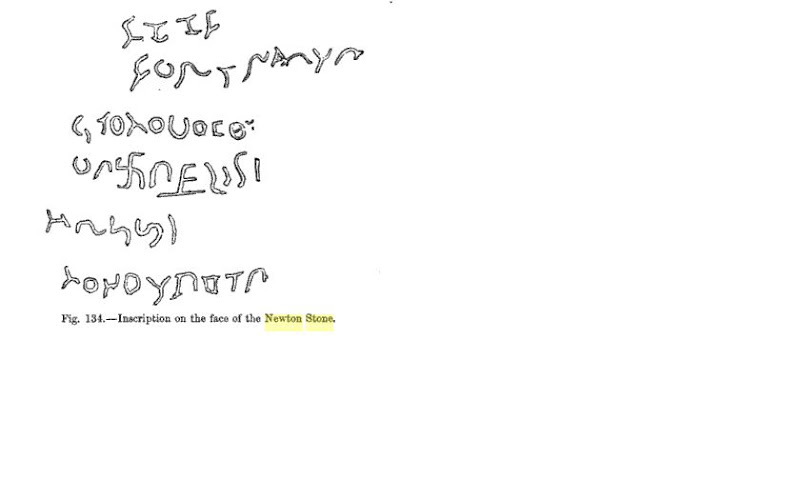 One of Newton Stone Scripts.
One of Newton Stone Scripts.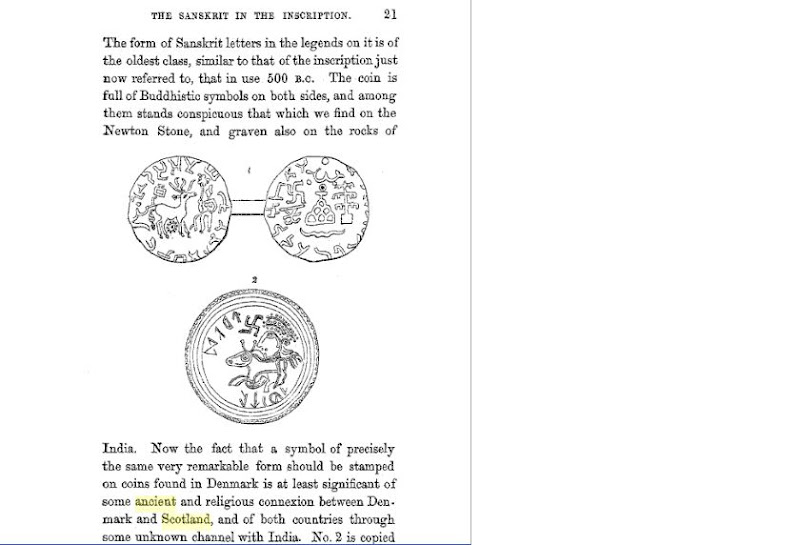
Coins found in Denmark and Nordic Countries with Swastika and Brahami Scripts.
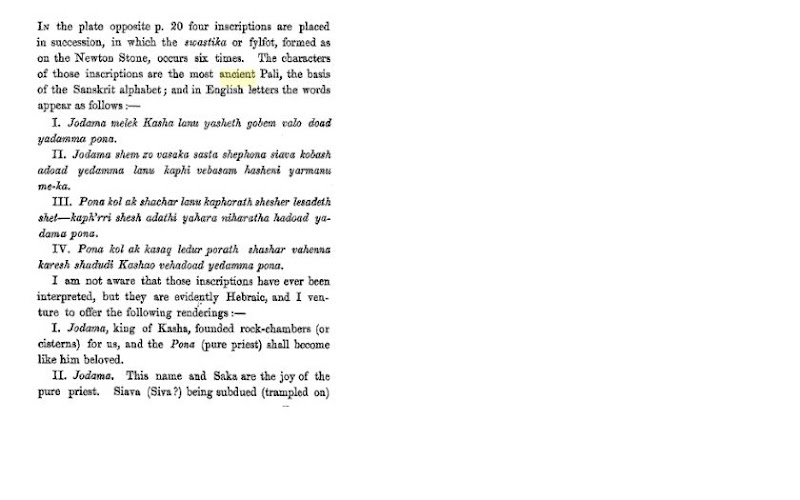 Translation Tranlation of the Script (am not sure how correct it is).
Translation Tranlation of the Script (am not sure how correct it is).
Translation of the Script (am not sure how correct it is).

Translation of the Script (am not sure how correct it is).
The Rev. Dr. Lindsay Alexander stated that he had for long taken an interest in this curious inscription, and had compared it with the Phoenician and other alphabets, but without being able to find anything beyond resemblances. More recently he had been struck with the similarity of character between the letters on the Newton Stone, and those of the Sinaitic Inscriptions, and of the Caves at Ellora. Ref. 1
... traces the existence of the ancient race from India to Europe, but will go on to a reference to the sculptured or inscribed stone, called the " Newton Stone", found in Aberdeenshire, ...
... After giving a long account of the similarity of the letters which are found on the stone to many which are found in ancient caves in India...
There is a great number of pillar stones in Scotland; many are sculptured after a rude fashion, and are almost precisely similar to those existent in India and Ceylon. Elephants are depicted upon some, the legs terminating in scrolls, just in the same fashion as they are depicted in the East. It is singular to see copies of elephants so far from their ordinary habitat; still more curious is it to find that the artist is as conventional in Scotland as in Hindostan... Ref. 2
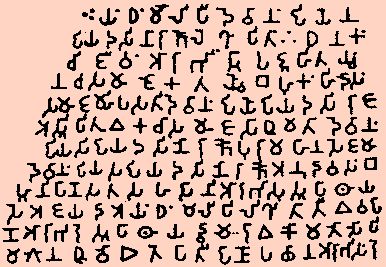
Ashoka's Edict
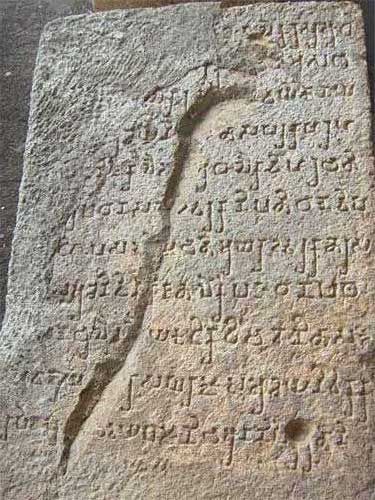
Rock Carving From Kanheri Caves in Jogeshwari Bombay.
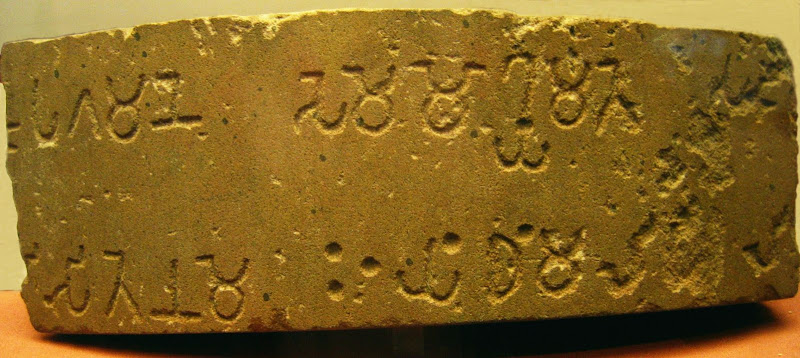
A Fragment from Ashoka's Pillar
